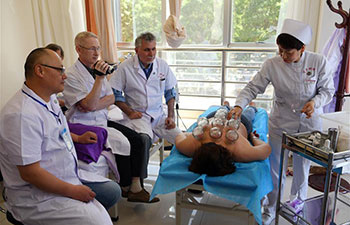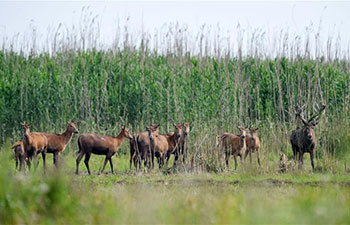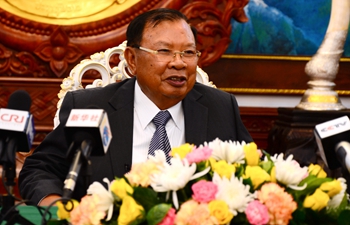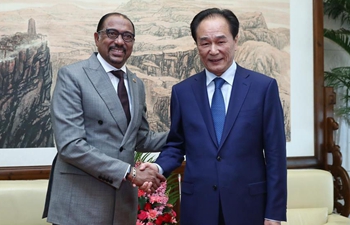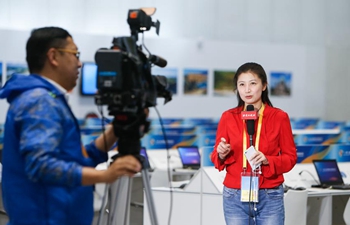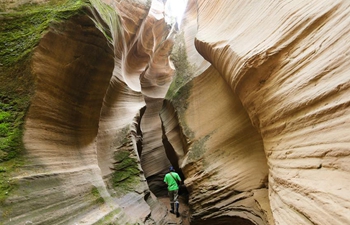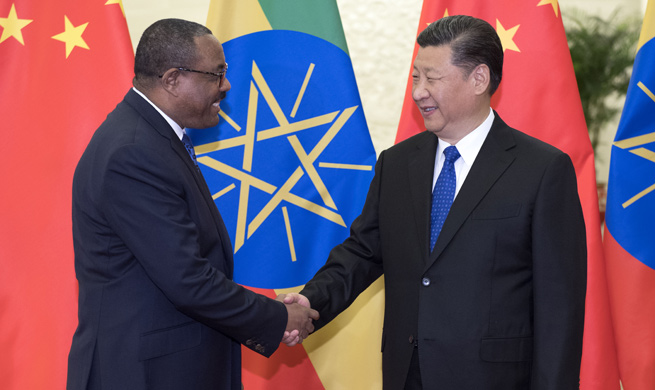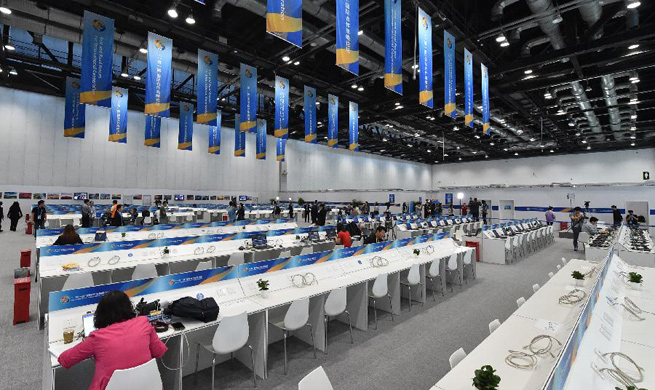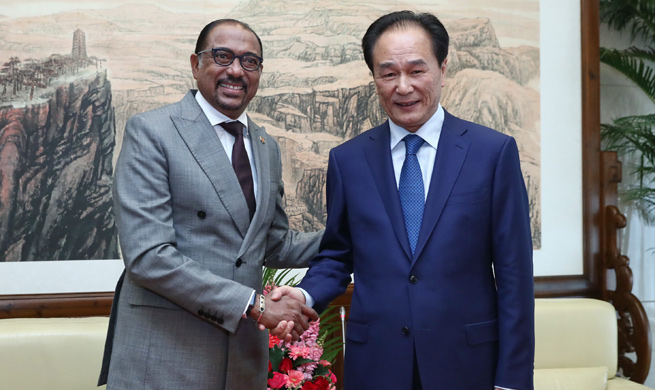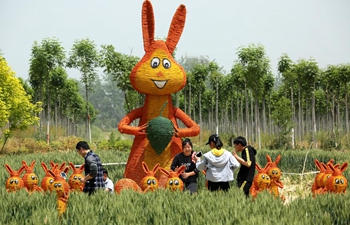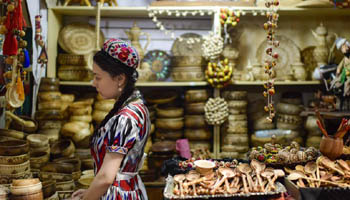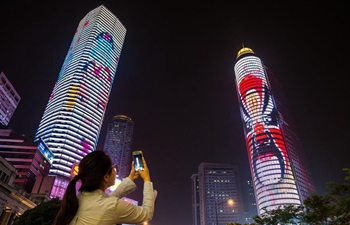by Stefania Fumo
VENICE, Italy, May 12 (Xinhua) -- The core theme of the China Pavilion at this year's Art Biennale in Venice is that individual acts of creation take place in a communal context that stretches across the dimensions of both space and time.
Four artists -- two folk and two contemporary -- have been invited to extend and interpret Chinese artistic traditions in a show titled "Continuum -- Generation by Generation".
The show mixes embroidery and sculpture, painting and performance, video and puppetry, installations and photography to explore the notion that artists stand in an unbroken line from antiquity to now.
The scale of the work ranges from small piles of red stones on the floor, to free-standing copper sheets cut and molded into mythological tree-like shapes standing over five metres tall.
Each artist is rooted in the teachings of those that came before and will in turn provide fertile ground for those that are to follow.
This is shown in a piece titled "Map of Succession of Teachings", in which photos and images of artists past and present are pinned to the wall spanning several meters in every direction, and are connected to each other by different-colored threads to symbolize mentor-disciple relationships across generations.
"Chinese art is a communal act across five thousand years of our collective history," wrote curator Qiu Zhijie, a Venice Biennale veteran who has been a participating artist three times.
When Qiu was asked if there wasn't the danger that in being so busy looking back, one might forget how to move forward, he said:"We are moving forward while looking backward."
Born in 1968, Qiu told Xinhua he spent ten years just grinding ink for his calligraphy master.
It was his chance to learn from one of the last pure traditional scholars, and it brought him to the notion at the core of the Continuum show.
"Artists die, but art doesn't. Energy passes from one to another. Even in Europe, the old masters spoke of their teachers -- we know Michelangelo's master was Donatello," said Qiu.
"Every artist is a small part of creation. This energy is greater than any individual, and all the teachers of the past are spiritual presences that nurture the artists of the future," he said.
"We need to recall this notion, to bring it back to the present time," said Qiu, a professor at the Central Academy of Fine Arts in Beijing.
He was given the task of curating the China pavilion.
The idea of national pavilions "is very outdated," Qiu said.
The Art Biennale in Venice (Venice Biennale) itself was founded in 1895, based on nationalist ideas that are becoming obsolete, Qiu pointed out. How to explain China, and what is China? "My map of teachers shows my professor, and his teacher, and his teacher -- on that map you can find connections with German philosophers, French thinkers, Japanese artists," he explained.
"All these connections go beyond national borders," he said. "It's like a fire -- it can go out very quickly, and you need to keep feeding it, bringing outside energy to keep it alive."
"Every country's art is one point in a web of connections," he continued. "We are talking about contribution -- what can we give to the world. You are not creating anything by yourself," Qiu told Xinhua.
The China Pavilion is one of 86 national pavilions at the 57th Art Biennale, which opens to the public on May 13 and runs through Nov. 26.
Next year, the Continuum exhibit will travel to the Ming Contemporary Art Museum in Shanghai and the Times Art Museum in Beijing, to coincide with the 2018 Lantern Festival, according to Qiu.




